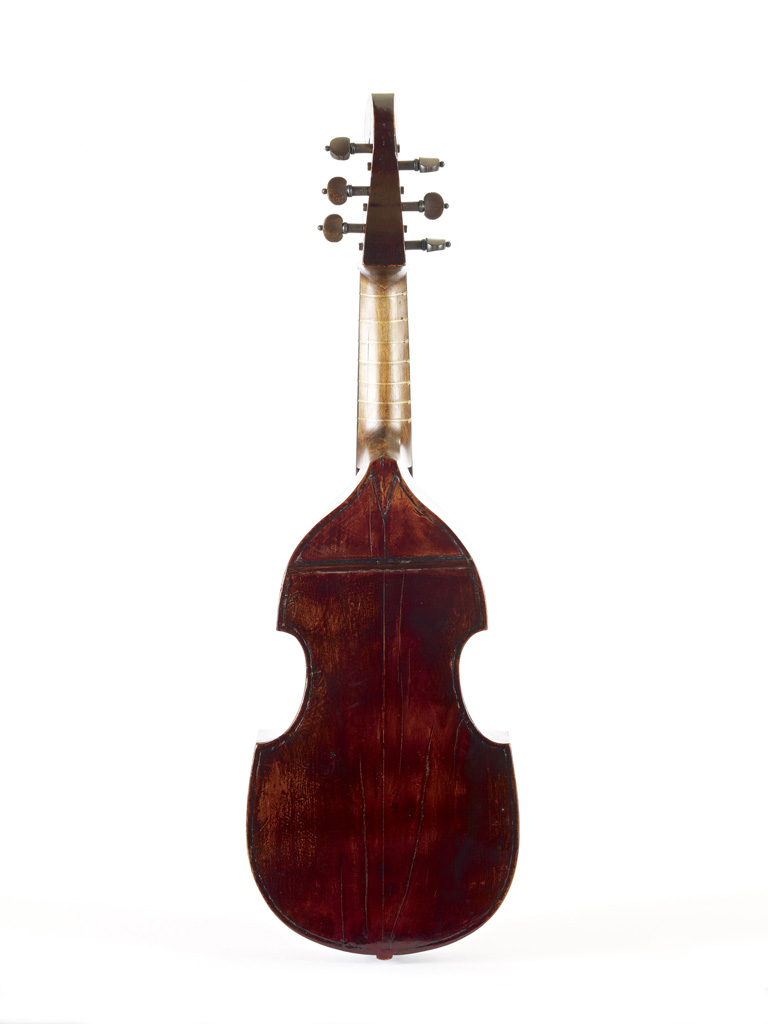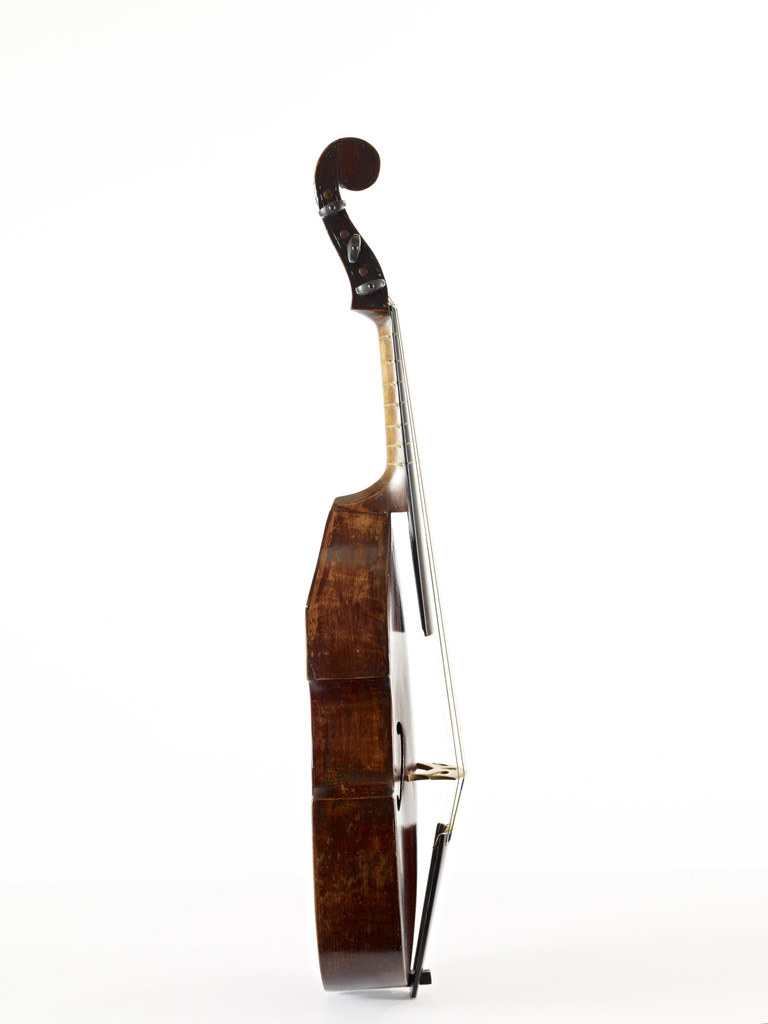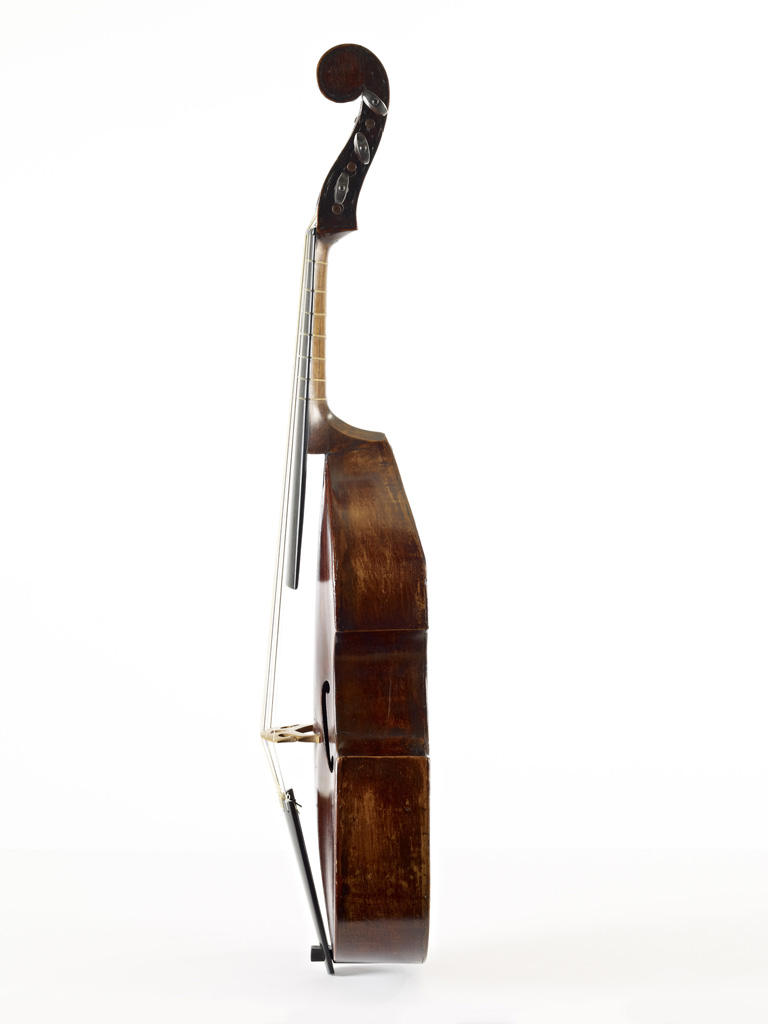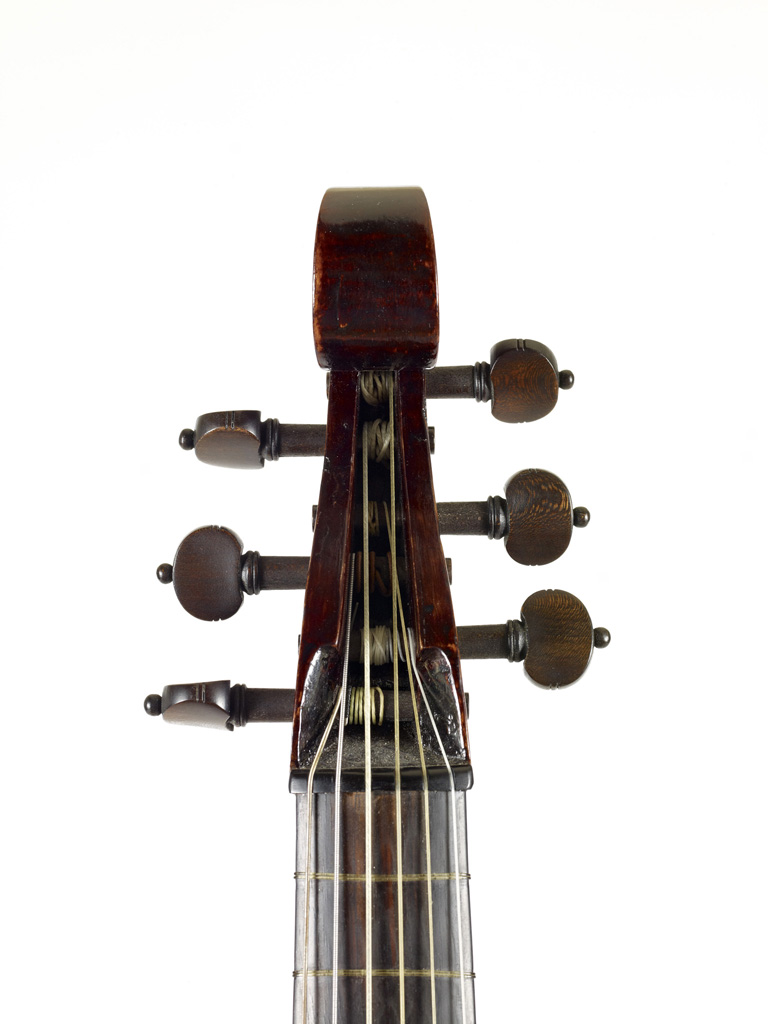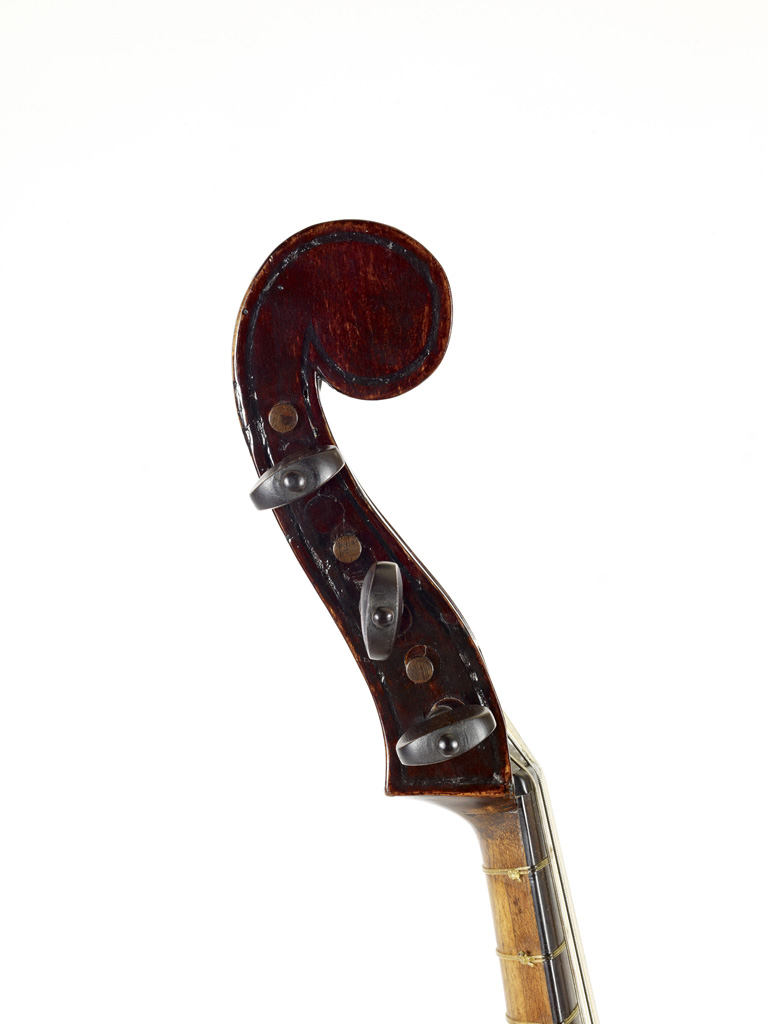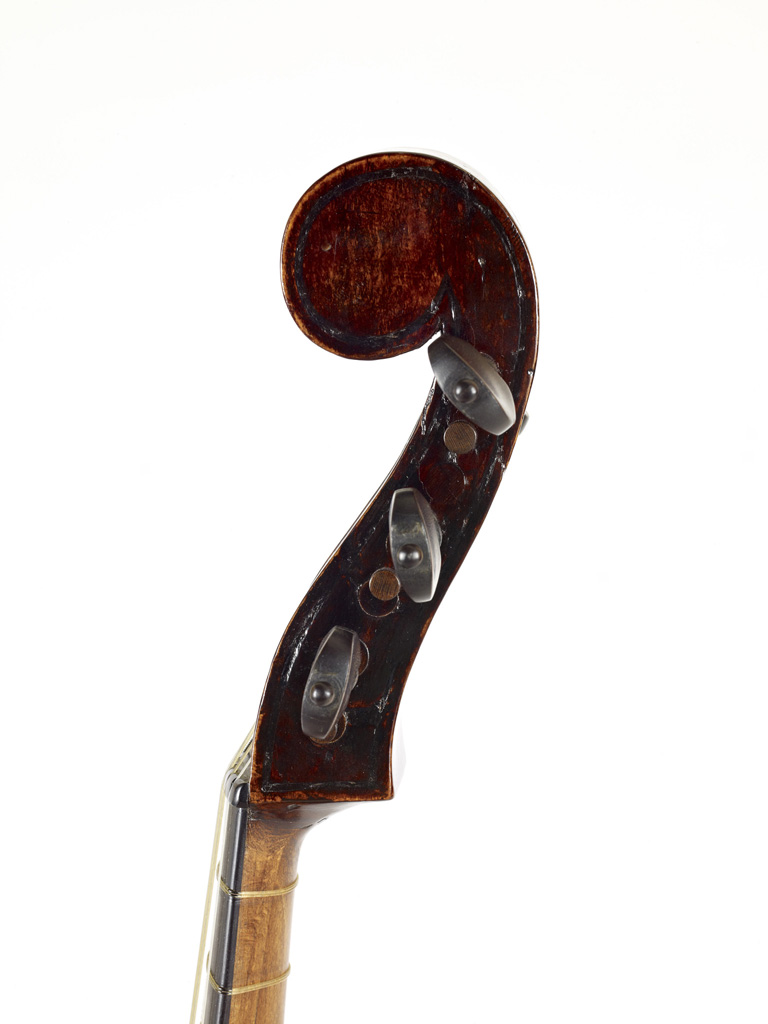The varnish on the table is so dark and opaque that it is impossible to see for certain whether there are five or seven pieces of pine. A tapered central stave is clear enough to suggest that the table is built in the typical English manner from bent staves. The grain is straight in the center but slopes towards the inside on the wings, and the wood is fairly open with about 5 growth rings per cm. The soundholes are C shaped. The edge purfling is a single broad line consisting of two scribed parallel lines with ink between. In places the ink has rubbed off, and even a few slivers of wood have flaked off.
Again the very dark varnish obscures the details of the back, but it appears to be two pieces of plain maple. The single purfling, which makes a V at the neck heel, is similar to that of the table, except that there appears to be something of a channel scooped out between the scribed lines, and this is filled rather than painted with a black substance, perhaps a mixture of ink and glue, which has crumbled away in places. The score across the fold presumably broke at some time and has been repaired with a cross-grained strip of dark wood.
The ribs are of maple with little flame.
The original plain maple neck is integral with the pegbox, which ends in a flat-sided scroll whose only decoration is a border of purfling similar to that on the back. The stained wood pegs are not original.
The shallow fingerboard and tailpiece are either stained pearwood or brownish ebony, and appear to be old if not original. Evidence of a repair to one rib and the back at the bottom block suggest that the hookbar is not original.
The varnish is a very dark brown, heavily craqueled and oxidized.
Body length 40.0
Body width
upper corners 18.1
center bout 13.0
lower corners 23.0
String length 39.2
Rib height
top block 4.7
fold 6.5
upper corners 6.4
lower corners 6.4
bottom block 6.5
Label
William Turner at ye
Hand and Crowne in
gravelle Lane nere
Aldgate London 1652


